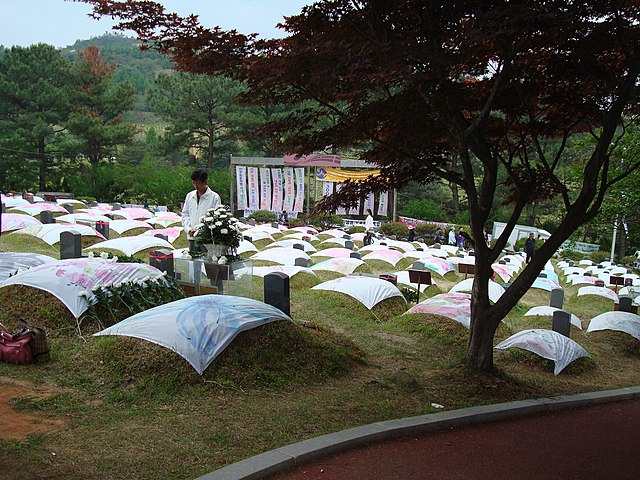The Gwangju Uprising, known in Korean as May 18, took place in Gwangju, South Korea, in 1980. The uprising was a response to the coup d'état of May Seventeenth that installed Chun Doo-hwan as military dictator and implemented martial law. Following his ascent to power, Chun arrested opposition leaders, closed all universities, banned political activities, and suppressed the press. The uprising was violently suppressed by the South Korean military. The uprising is also known as the May 18 Gwangju Democratization Movement, the Gwangju Democratization Struggle, the May 18 Democratic Uprising or the Gwangju Uprising in South Korea.
Memorial Hall in the May 18th National Cemetery in Gwangju where victims' bodies were buried
The former South Jeolla Provincial Office
The victims of the Gwangju Massacre were buried at the May 18 National Cemetery.
May 18 Minjung Struggle Memorial Tower
Gwangju, formerly romanized as Kwangju, is South Korea's sixth-largest metropolis. It is a designated metropolitan city under the direct control of the central government's Home Minister. The city was also the capital of South Jeolla Province until the provincial office moved to the southern village of Namak in Muan County in 2005 because Gwangju was promoted to a metropolitan city and was independent of South Jeolla province.
A memorial to commemorate the lives lost in the 1980 Gwangju uprising.
Gwangju World Cup Stadium.
Gwangju-Kia Champions Field, home field of Kia Tigers.
Picture taken from a hill overlooking Gwangju in April 2017.







